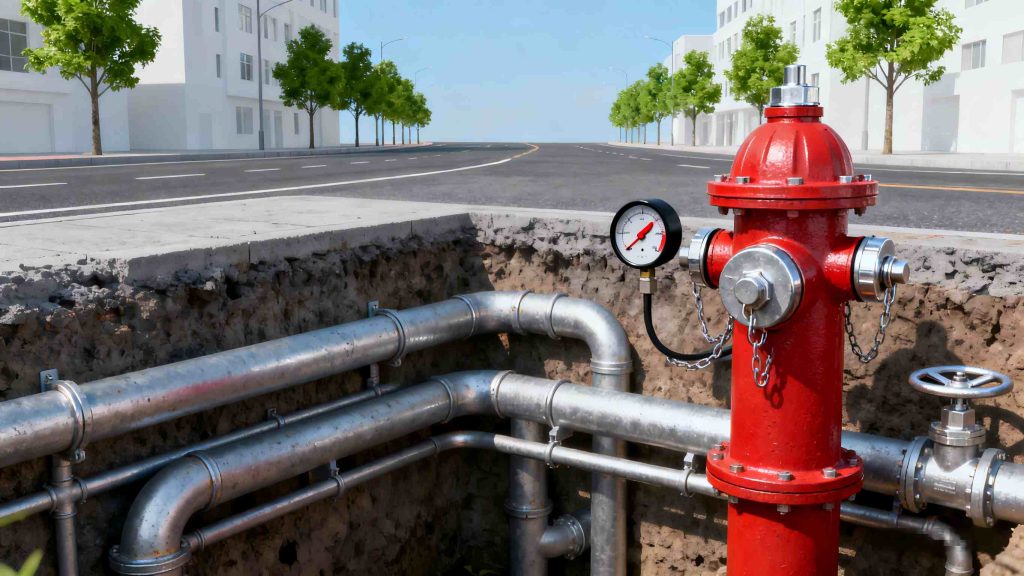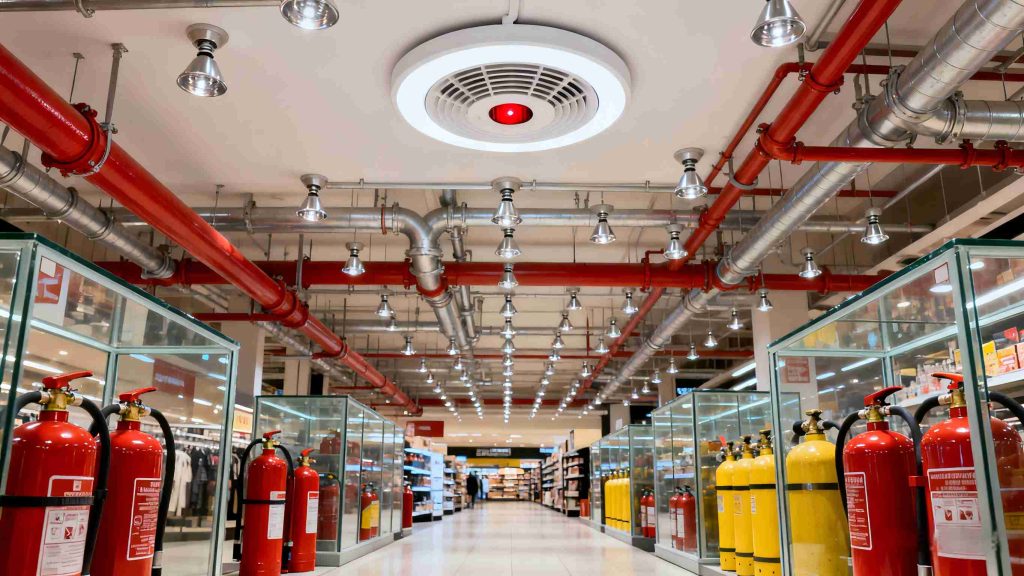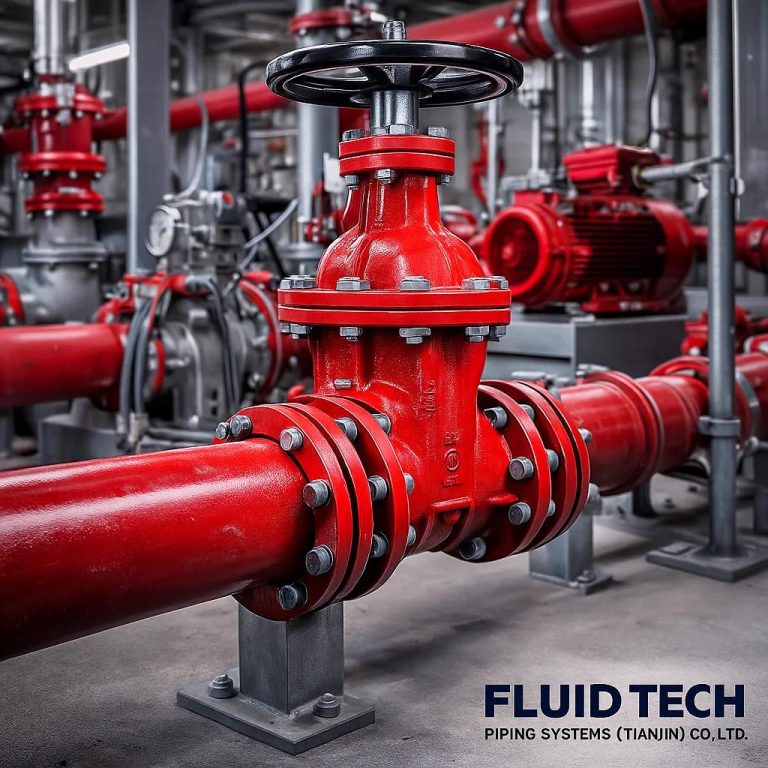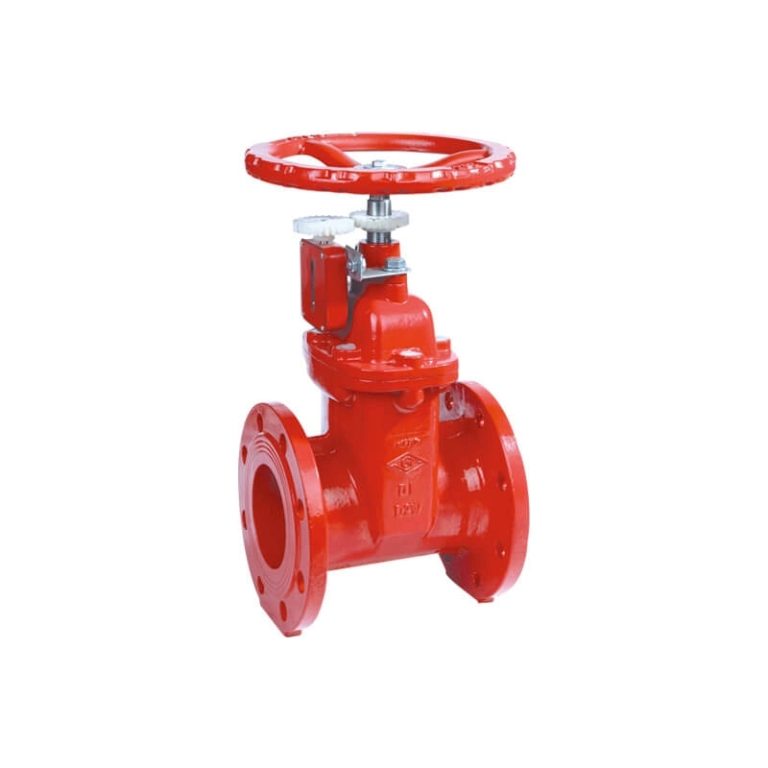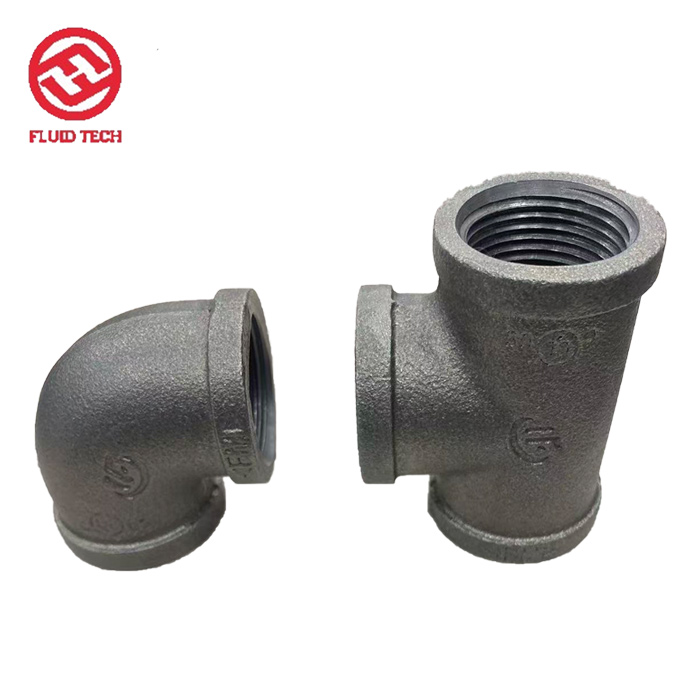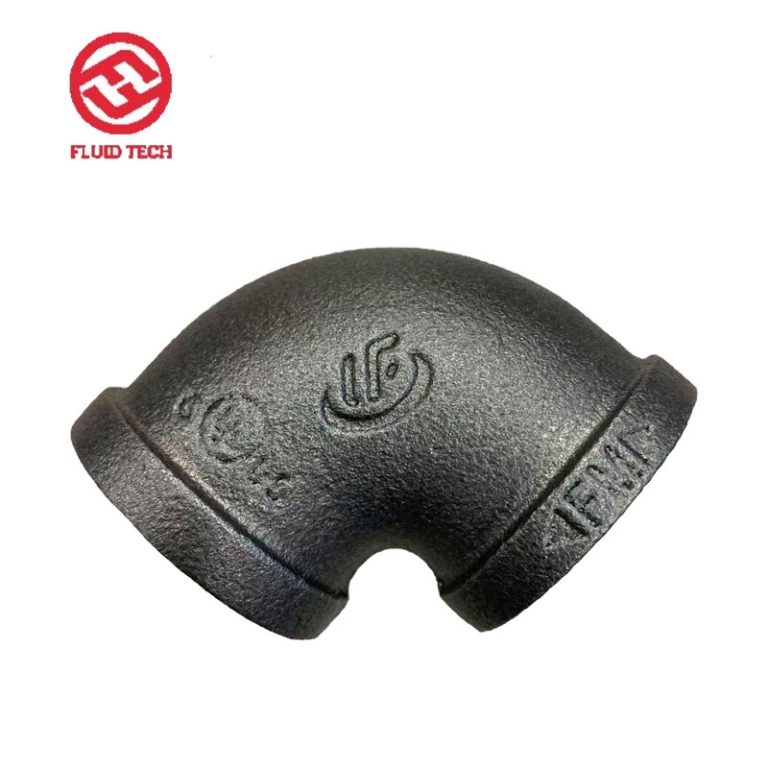Fire hydrant systems form the backbone of any building’s fire safety setup. Think about a high-rise office tower. Smoke begins to fill the corridors on the 15th floor. Firefighters show up. They have hoses in hand. They are ready to connect and release a rush of water. But what comes next? The water does not just flow freely. It gets handled through a web of valves. These open or close in seconds. They direct pressure right where it is needed. And in the background, monitoring tools stay on guard. They alert teams to any pressure drops or leaks. This happens before those issues turn into big problems.
This goes far beyond the hose you spot on the wall. In today’s fire hydrant systems, valves and monitoring play the main parts. They change a basic water source into a quick-reacting, life-saving tool. These parts make sure flow stays steady in the middle of chaos. They stop wasteful sprays. And they shorten response times. The National Fire Protection Association reports one key fact. Properties with well-kept hydrant systems see fire suppression up to 20% faster. This saves structures and lives. As cities pack in tighter and buildings stretch higher, grasping these parts becomes more important. This holds true for facility managers, engineers, and safety officers. They carry the weight of protection.
The Foundation: What Makes a Modern Fire Hydrant System Tick
At its heart, a fire hydrant system draws water from city supplies or on-site tanks. It sends that water through pipes to outlets set for quick use. Outdoor types line city streets and parking lots. They pull from underground mains to supply pumper trucks. Indoors, they sit in cabinets on each floor. These come with coiled hoses and nozzles. People or arriving crews can grab them fast.
What sets current systems apart from older ones? It is the move to smarter, more connected designs. Simple standpipes are a thing of the past. Those relied on raw power and rough guesses. Now, systems use rust-proof materials like galvanized steel and ductile iron. They handle bursts up to 250 psi without breaking. These changes come from hard lessons in actual fires. Take the 2017 Grenfell Tower fire in London. Poor water pressure slowed containment there. And it made the tragedy worse. Today’s rules, like NFPA 14, demand extra risers now. They also call for auto-isolation features. All this avoids those old mistakes.
Key Components Beyond the Visible
Every part links up like gears in a clock:
- Piping and Fittings: Grooved couplings and malleable iron fittings that bend under quake stress. They keep flow going even in shakes.
- Hydrant Outlets: Standard threads for any hose hookup. These often have caps to block tampering.
- Pressure Regulators: Gadgets that calm sudden surges. They hold output steady at 100 gpm at least.
This base lacks flash. But it lays ground for valves and monitoring to stand out.
Valves: Gatekeepers of Water and Pressure
Valves may hide in cabinets or deep in risers. But their role calls for sharp accuracy. They manage the water rush. They choose when to let it go full blast or pull it back. This avoids pipe breaks. In a tight spot, a bad valve means lost seconds. And that is time when flames push on unchecked.
Picture a warehouse fire in a big industrial area. Crews hook up as they arrive. Ball valves in the main line flip open fast. They send 500 gallons per minute without pause. Without them, pressure might jump high. It could split lines then. This would flood spots needlessly. And it would weaken the full response.
Common Valve Types in Action
Fluid Tech equips systems with valves built for hard jobs. Each one meets FM and UL standards for dependability. Here is a quick look:
| Valve Type | Primary Function | Typical Application | Pressure Rating |
| Stainless Steel Ball Valves | Quick quarter-turn shutoff for isolation | Hospital risers, high-traffic zones | Up to 300 psi |
| Butterfly Valves | Throttling flow in large mains | Outdoor hydrants, municipal ties | 150-250 psi |
| Van phòng cháy | Automatic signaling for alarms | Indoor cabinets, sprinkler ties | 175 psi |
| Hose Valves | Direct control at the outlet point | Floor-level access points | 100-200 psi |
These are not swap-out pieces. A butterfly valve, for one, uses a flat disc. It adjusts flow smooth and even. That makes it perfect for linking to city water. Pressure shifts there often. In one Ecuador hospital job, stainless steel ball valves stood strong. This was during a drill that mimicked a spread-out outbreak. They kept flow without a snag.
Pressure Management in the Heat of the Moment
Valves do more than open and shut. They balance the whole setup. Upstream check valves block backflow. They stop dirty water from mixing into clean lines. Downstream, pressure-reducing valves limit outputs. They keep levels safe. This guards hoses from snapping around wild. Data from the Fire Protection Research Foundation points this out. Systems with hands-on valve controls cut water damage 15-25% lower. This beats passive types. Crews can tweak delivery right then.
Valves fail, and systems stumble. But when they run right, they shift floods into aimed hits. Engineers share tales from yearly checks often. Valves jam in chilly air. Then they get replaced before trouble strikes for real. Smart changes, tied to wear signs, keep it all set.
Monitoring: Keeping Systems Alert and Alive
If valves act as the muscles, monitoring serves as the nerves. These tools follow pressure, flow speeds, and even valve spots live. They send data to main boards or phone apps. In the time of smart buildings, skipping this watch creates dark areas.
A lone pressure gauge looks plain. But add digital sensors, and you gain early warnings. Low flow? It might mean a shut valve or a drip. High pressure? Check for blocks. In the 2020 Australian bushfire wave, watched hydrants in danger spots helped. They allowed far-off looks. Teams spotted problems hours before showing up.
Essential Monitoring Tools
Current setups stack several layers:
- Flow Meters: Sound-wave sensors that gauge speed without blocking pipes. They hit accuracy within 2% at top speed.
- Pressure Transducers: Electric watchers that note psi shifts every few ticks. They set off alarms under 65 psi.
- Valve Position Indicators: Tamper alerts that buzz control spots if hands touch a handle without okay.
In a UK cinema update, these alerts nabbed a work slip. A half-shut valve cut output 30%. They fixed it before the big night. No fuss. Just steady care.
From Data to Decisions
The true strength sits in the mix. Supervisory Control and Data Acquisition (SCADA) systems gather it all. They show screens that mark odd spots. A fall in hydrant zone pressure could link to a butterfly valve easing shut. This might come from grit buildup. Techs get buzzes: “Look at riser 3B.” The fix? In under five minutes. It stops a chain breakdown.
Numbers support this. A report by the Society of Fire Protection Engineers notes it clear. Watched systems trim false buzzes 40%. They lift ready time to 99%. It is not about toys for looks. It is about looking ahead. In big-risk places like power plants, where a fire could dim a whole town, these watchers stay wide open.
Tying It All Together: A Seamless Safety Net
Valves and monitoring do not work alone. They link for top work. Picture a tall apartment block. Sensors pick a flow glitch in the ground riser. The setup shuts isolation valves up top on its own. It shifts water to a backup line. Crews pull in to a firm setup. Hoses wait ready.
To show it, think of this tie-in summary:
- Scenario: Rush-time fire in a lively entry hall.
- Valve Response: Ball valves kick in for area control.
- Monitoring Input: Live psi info tunes flow on the spot.
- Outcome: Hold-back in under 10 minutes. Little side soak.
Jobs around the world back this. In a Singapore hotel build, hose valves with flow meters ran clean drills. Water struck marks without extra splash. That smooth match does not just happen. It gets built in.
Spotlight on Fluid Tech: Your Trusted Partner in Fire Hydrant Solutions
When it comes to sourcing reliable fire hydrant systems, Fluid Tech stands out as a dedicated supplier with a track record of quality and responsiveness. Drawing from years of global projects, from hospitals in Ecuador to cinemas in the UK, Fluid Tech delivers FM-approved and UL-listed components like durable hydrants, precision valves, and pipe fittings—all backed by rigorous pre-shipment testing and a warehouse network for swift delivery under 30 days. Their one-stop approach means seamless integration, whether you’re retrofitting an existing structure or outfitting a new build. With a focus on real-world reliability, Fluid Tech helps teams stay ahead of risks, ensuring every system performs when it counts.
Wrapping Up the Essentials
Modern fire hydrant systems thrive on more than sturdy hoses—they demand valves that command flow with unerring accuracy and monitoring that spots trouble before it flares. Together, these elements transform reactive tools into proactive shields, slashing risks in everything from office blocks to industrial yards. As fires evolve with our built environments, so must our defenses. Investing in these core features isn’t optional; it’s the line between control and catastrophe.
Frequently Asked Questions
What makes valves so vital in beyond-the-hose aspects of modern fire hydrant systems?
Valves regulate water pressure and flow precisely, preventing bursts or shortages during emergencies. In setups like indoor cabinets, a simple ball valve can isolate sections, keeping the rest of the system operational—much like how they did in a recent hospital retrofit, maintaining steady supply across floors.
How does monitoring enhance the critical role of valves in fire hydrant systems?
Monitoring tracks valve performance in real time, alerting to issues like partial closures that could drop pressure. For instance, pressure transducers paired with valve indicators ensure quick fixes, boosting overall system reliability by catching problems early.
Why focus on the critical role of valves and monitoring when upgrading modern fire hydrant systems?
These components directly impact response speed and efficiency. Data from field tests shows they can cut suppression times by up to 20%, turning a potential multi-alarm blaze into a contained event—essential for high-occupancy buildings.
Can monitoring in modern fire hydrant systems predict valve failures?
Yes, through ongoing data logs on flow and position. If a butterfly valve shows irregular patterns, teams get ahead of wear, avoiding downtime as seen in power station maintenance where early alerts prevented a full shutdown.

